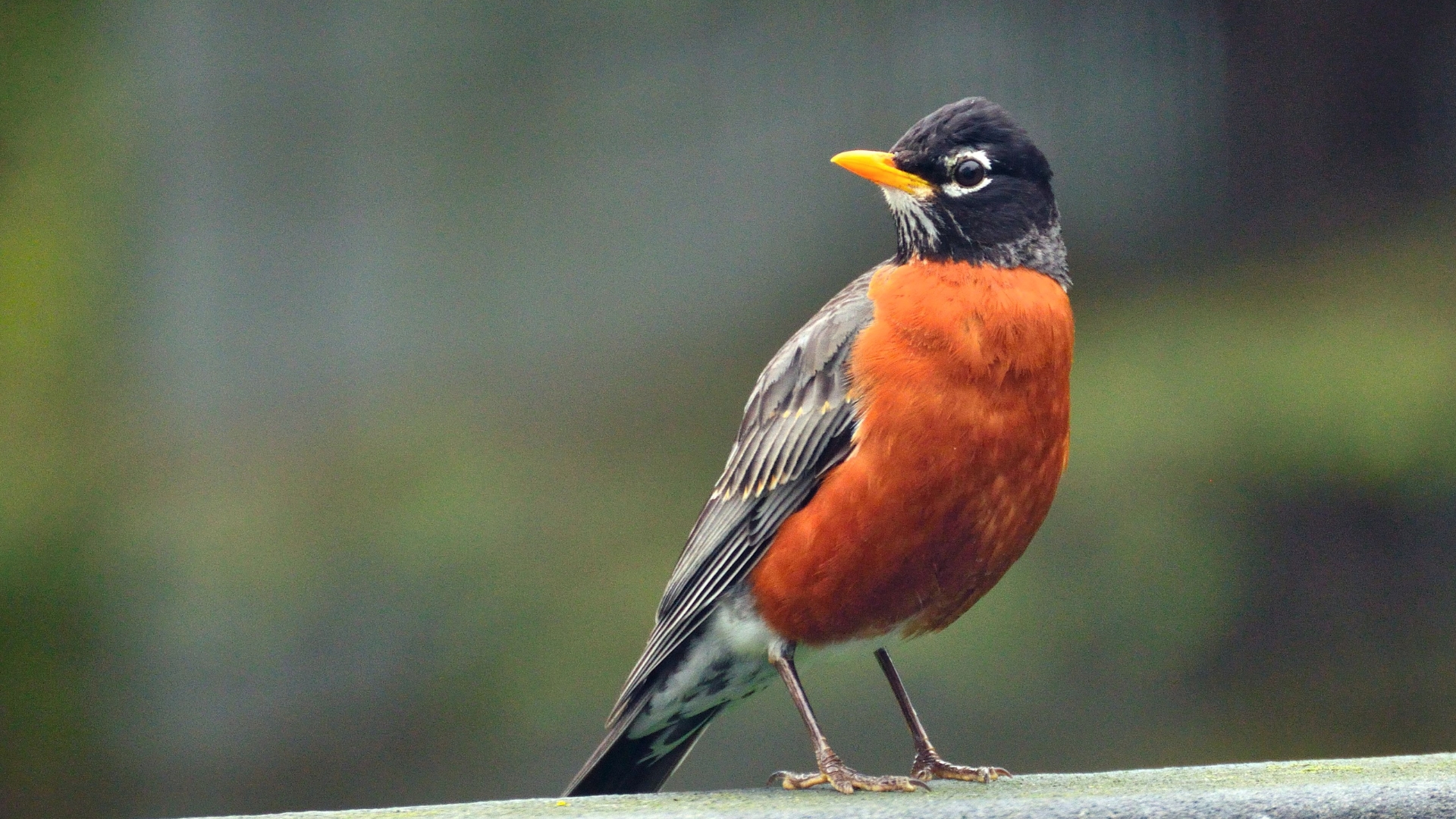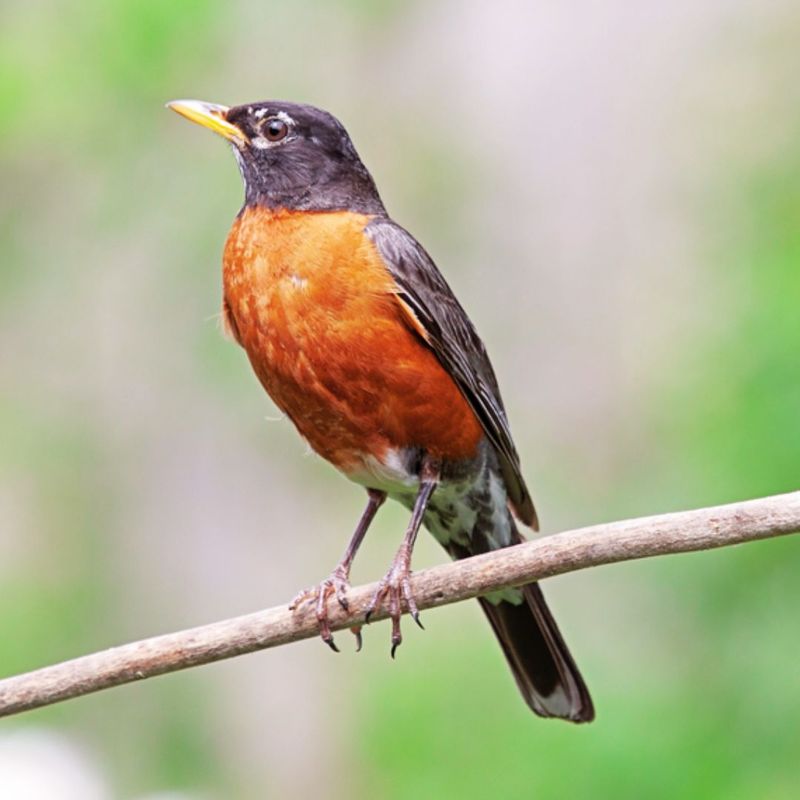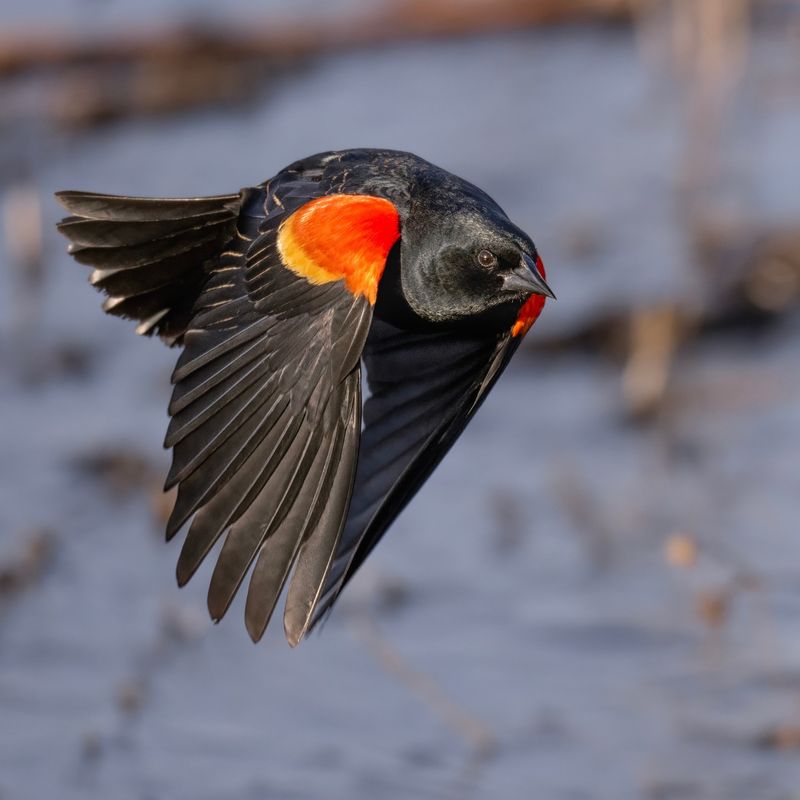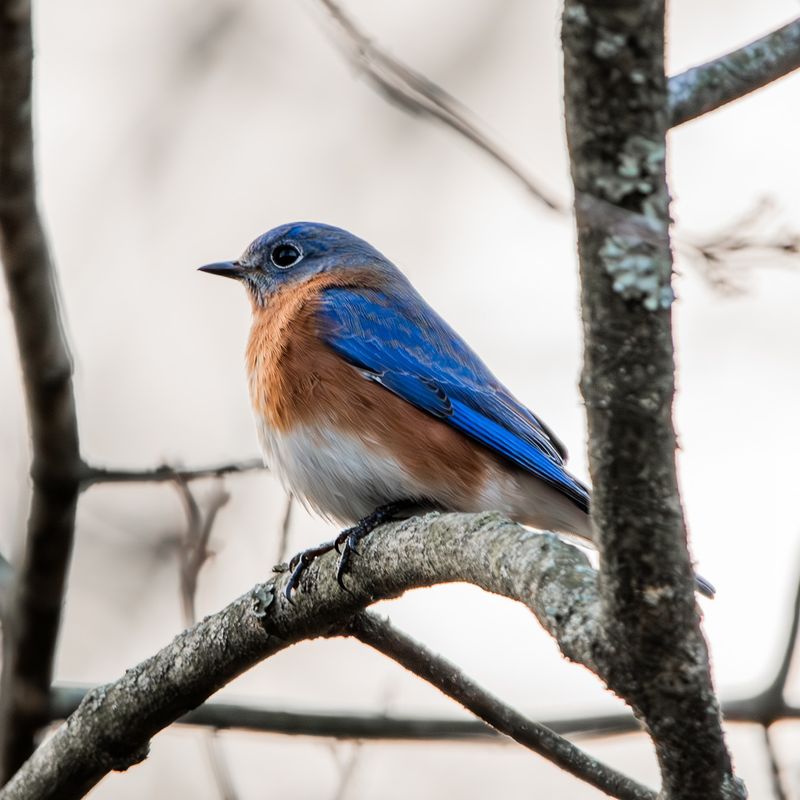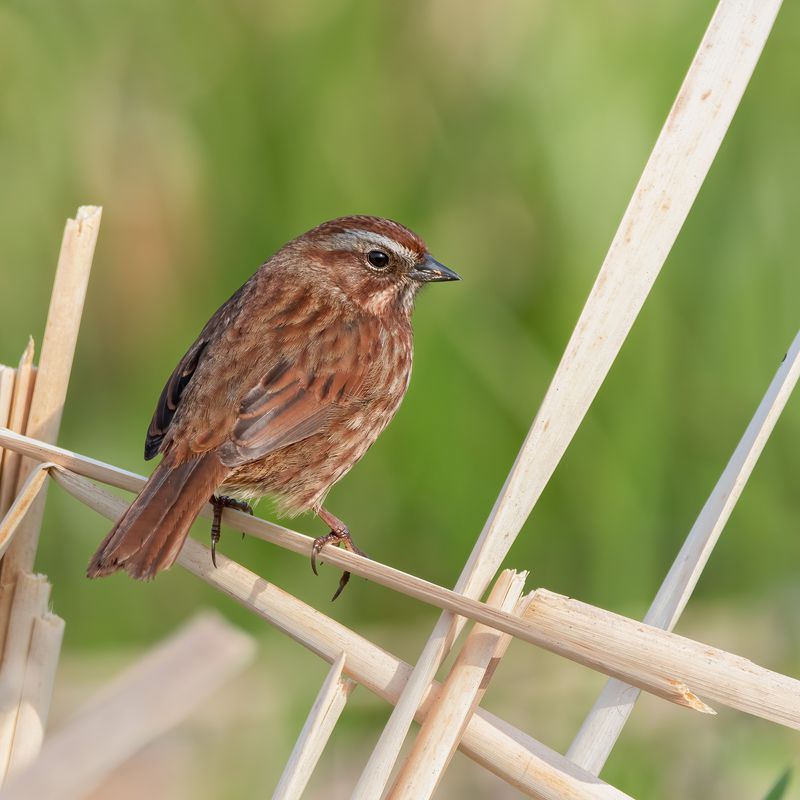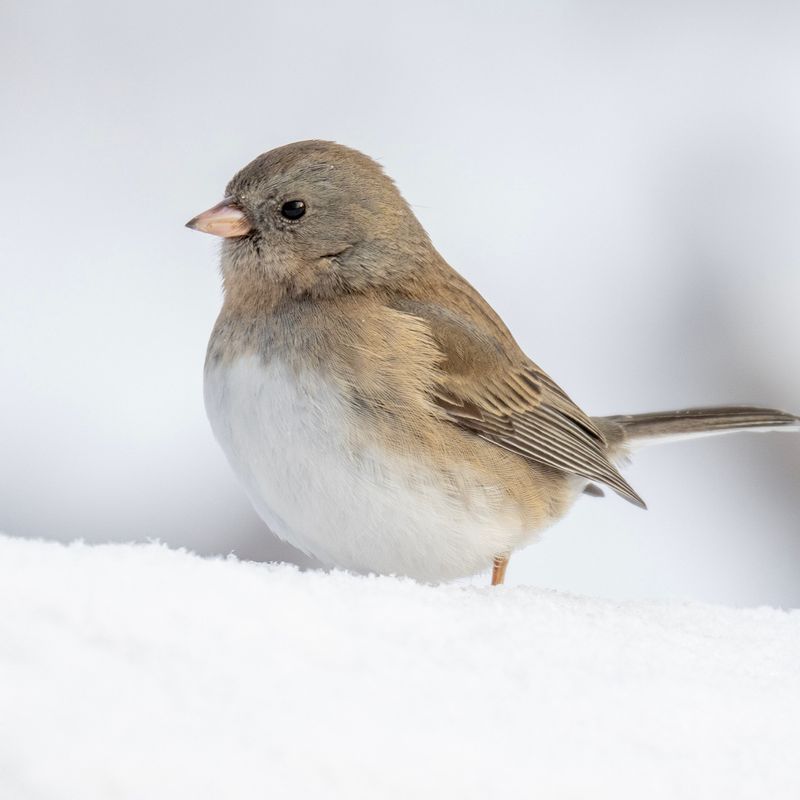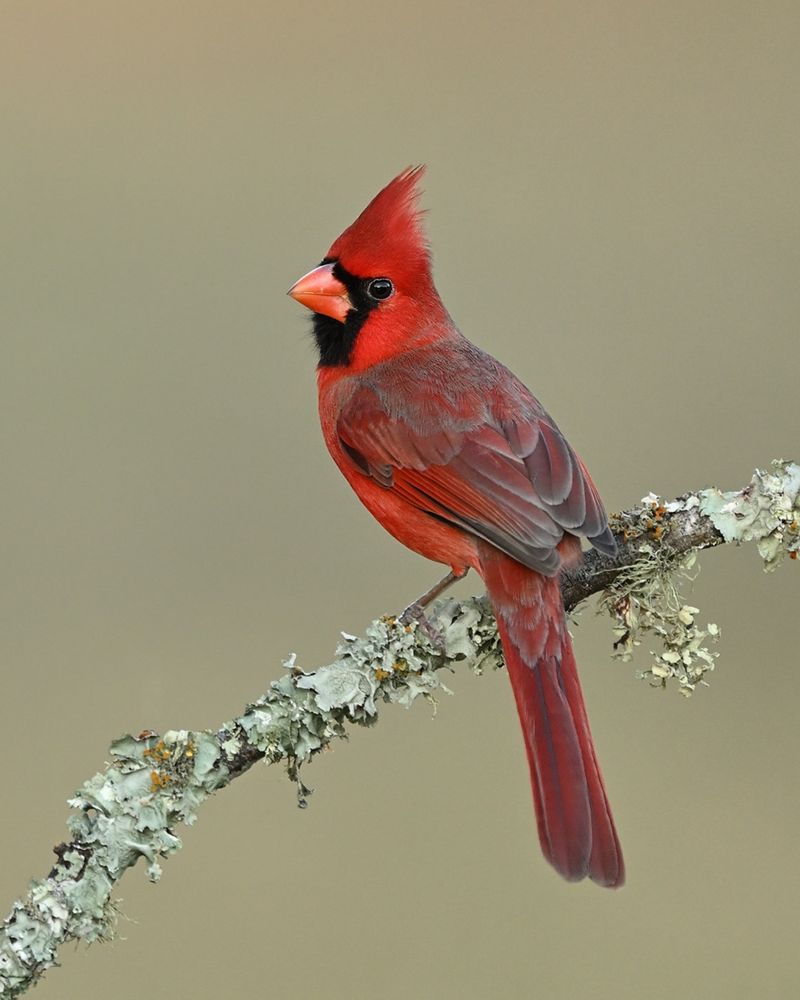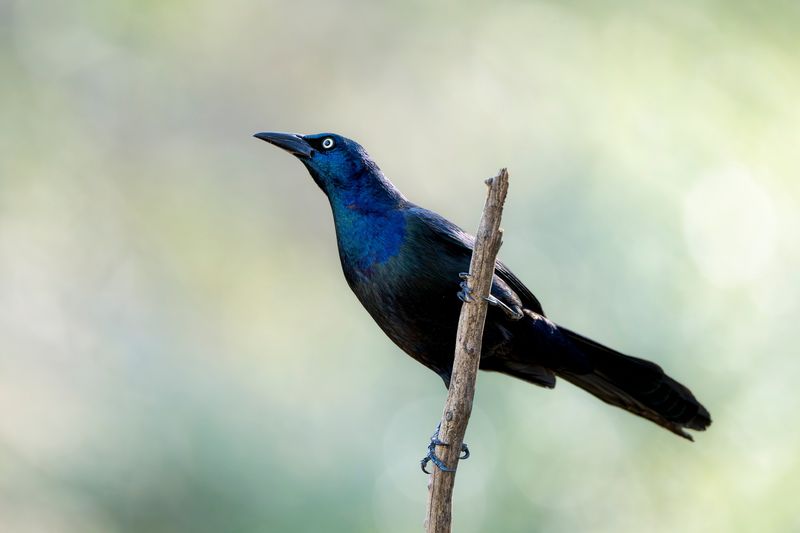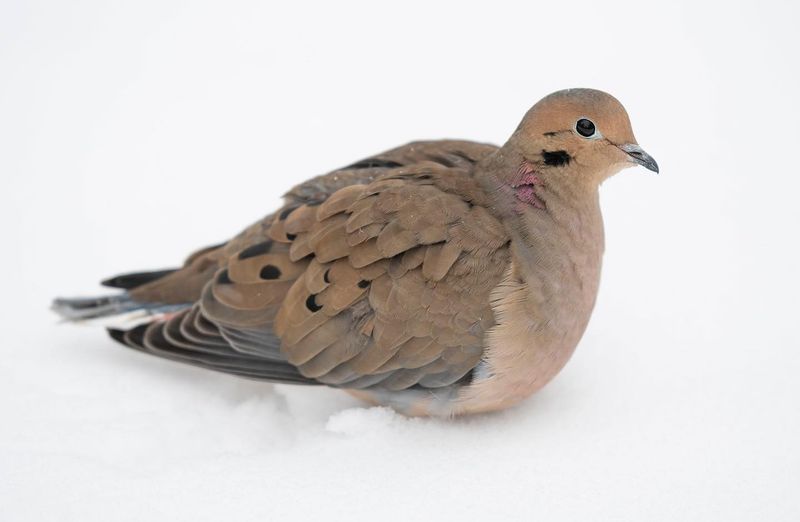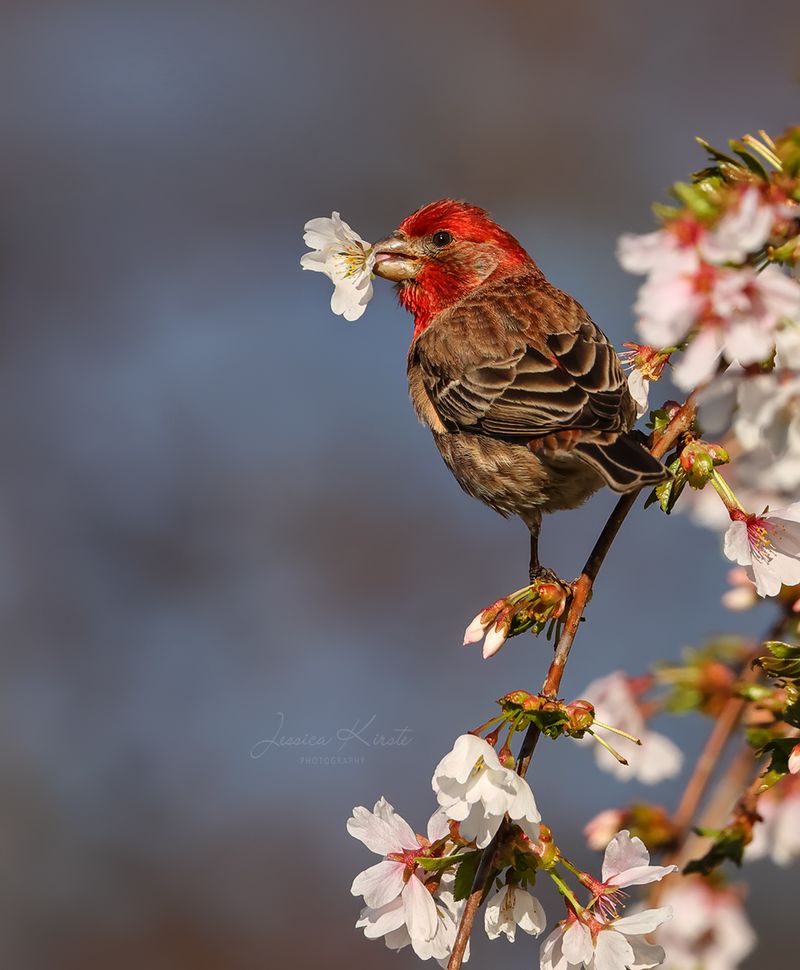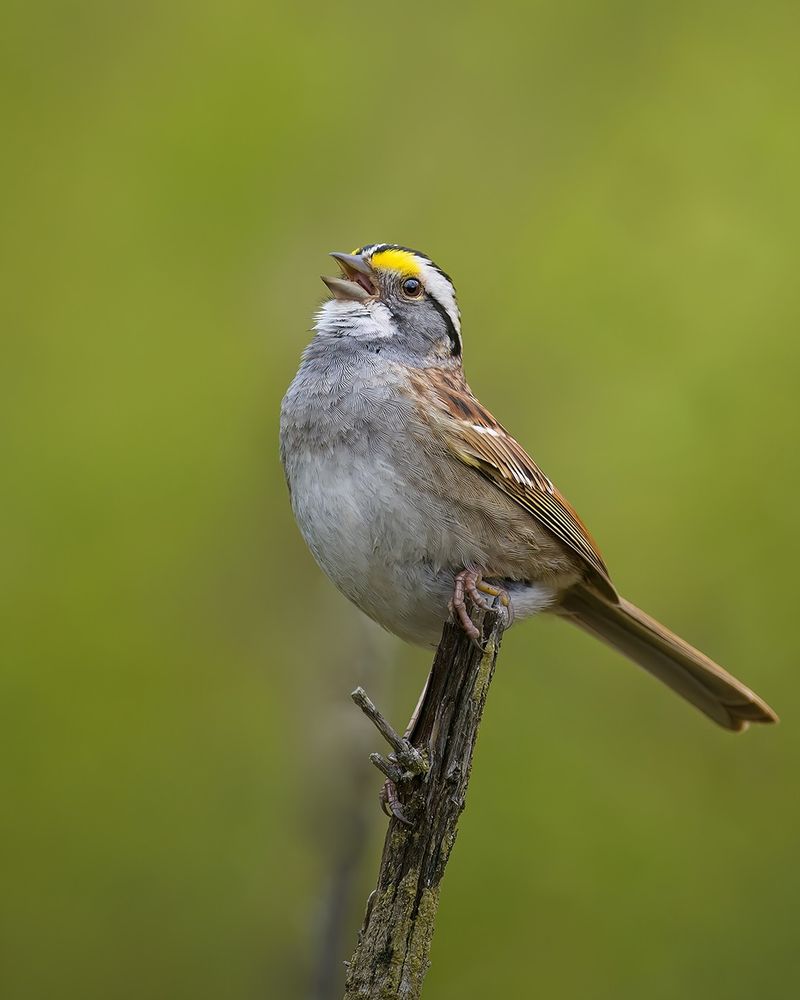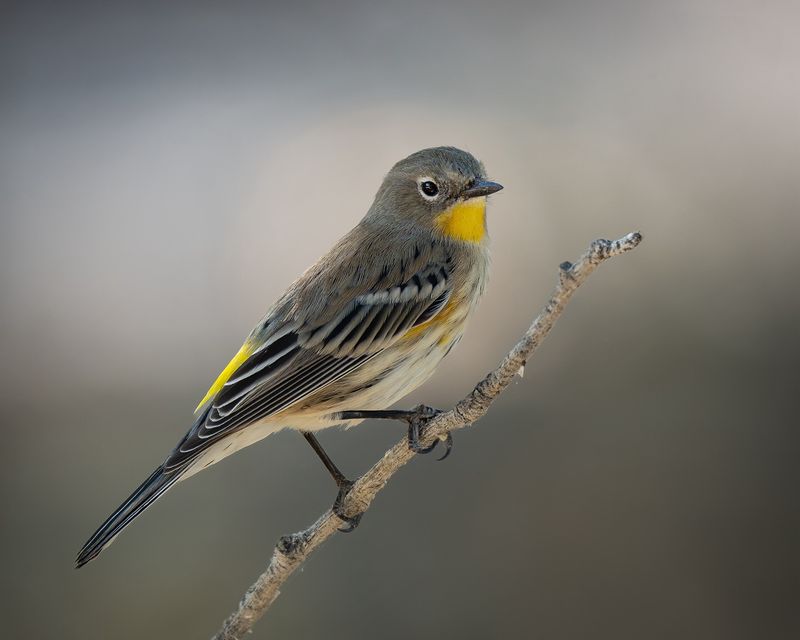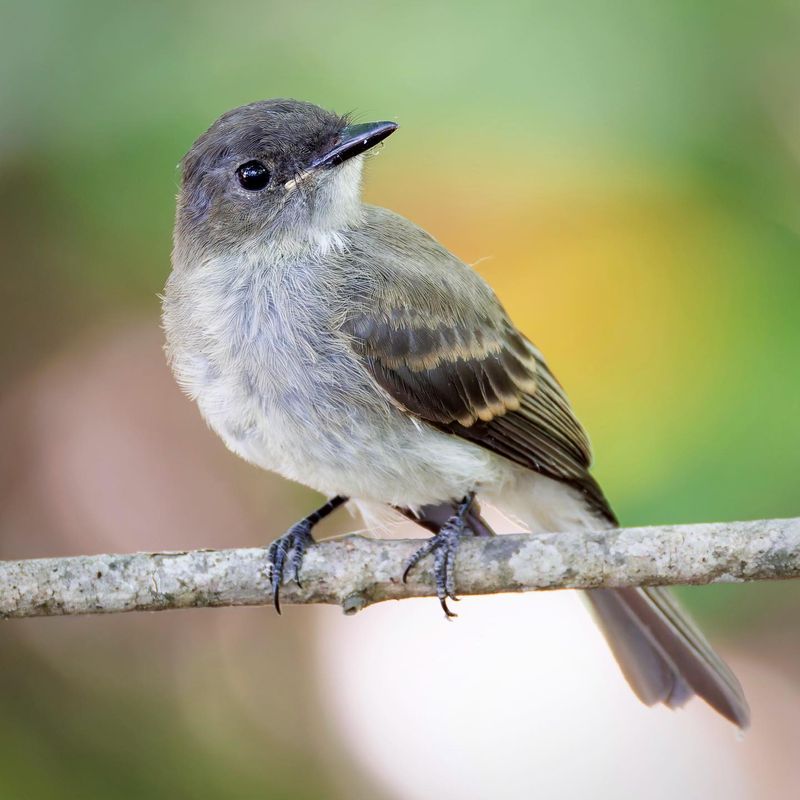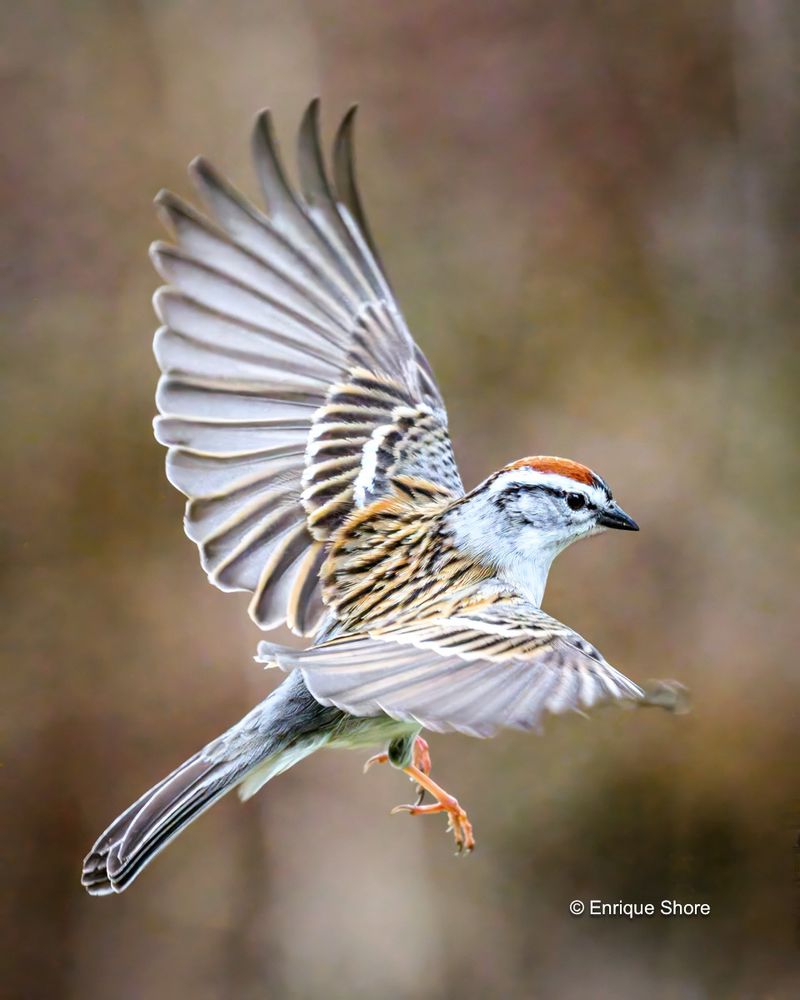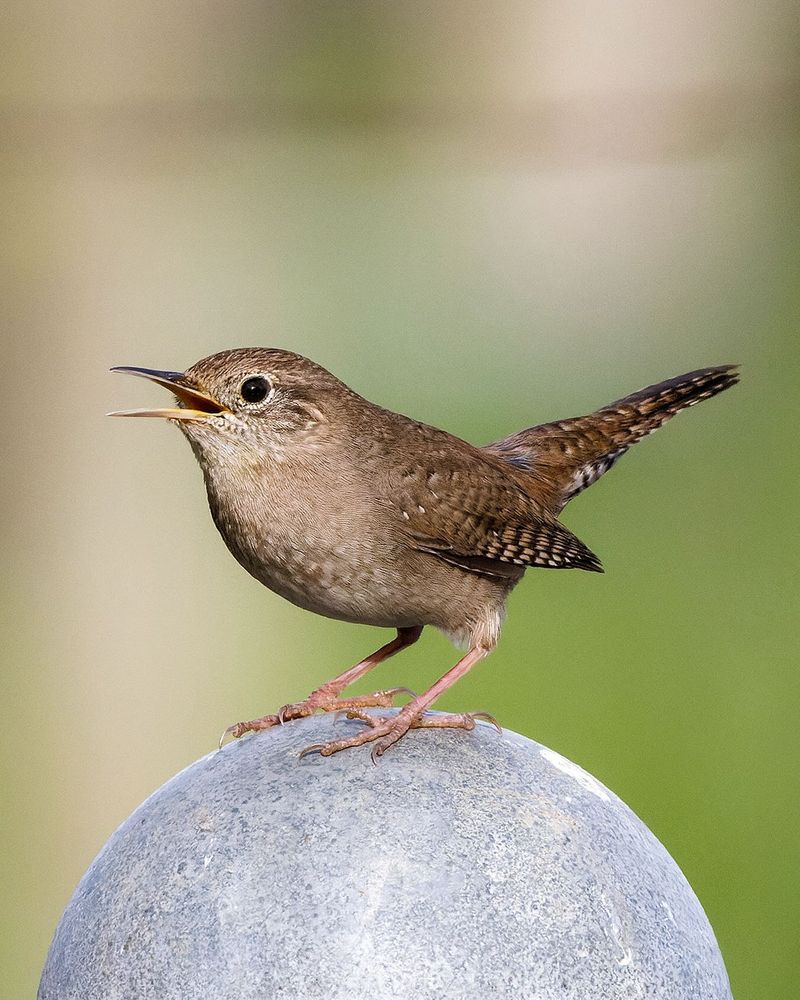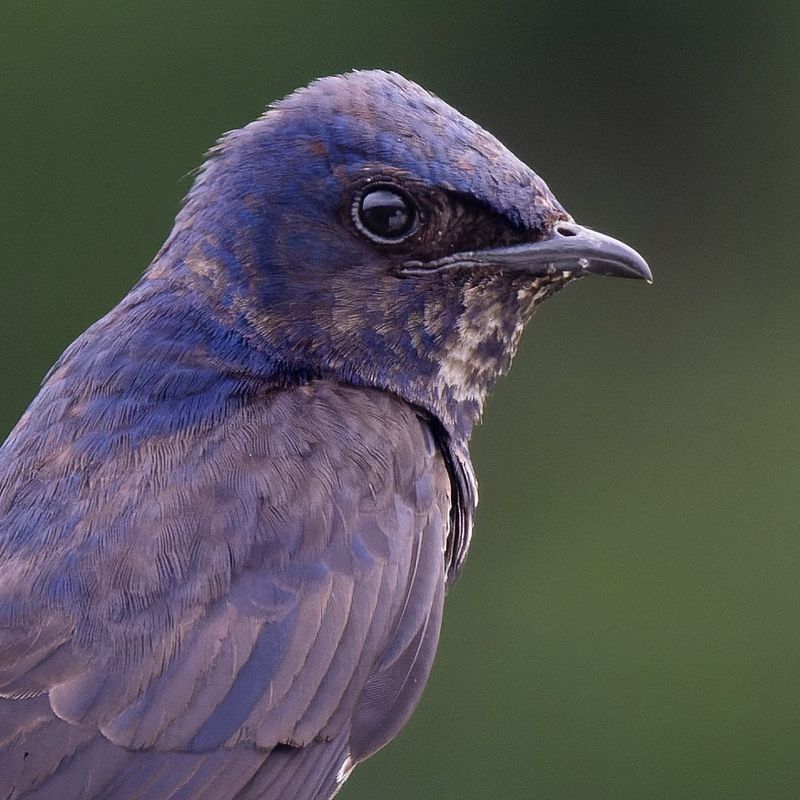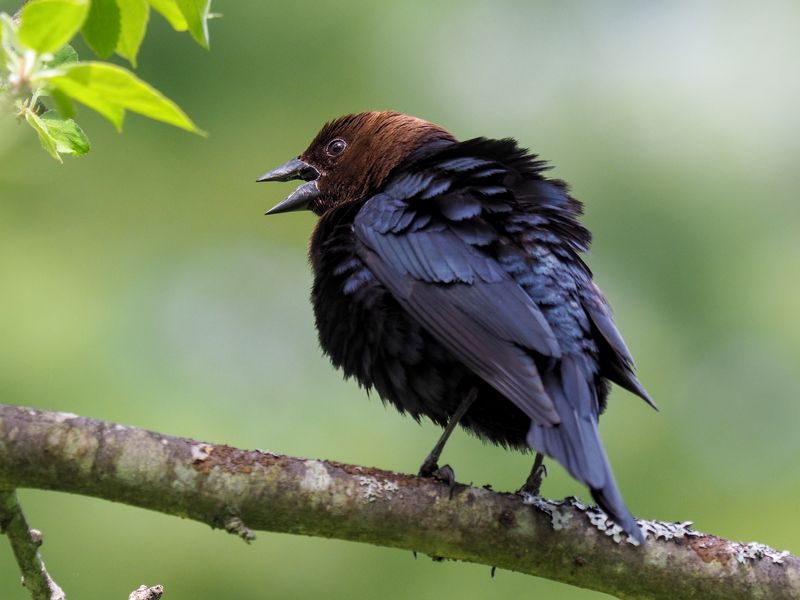Every spring, I find myself watching the yard like a hawk (pun fully intended) to see which birds show up first. There’s something magical about those early arrivals—the ones that signal the season’s really changing.
From chirpy robins to cheeky chickadees, these feathered friends are usually the first to stop by and say hello. Some come for the feeders, others for the bugs, but all of them bring a whole lot of charm.
If you’re as excited as I am for the return of birdsong, here are 17 visitors to keep an eye out for!
1. American Robin
The iconic red-breasted harbinger of spring might actually have been around all winter! Many robins don’t migrate far, instead forming winter flocks in wooded areas nearby. When you spot them hopping across your lawn hunting for worms, it’s a sure sign the soil is thawing.
Listen for their cheerful “cheerily, cheer up” morning songs growing more frequent as breeding season approaches. These familiar birds often build their mud-cup nests in shrubs or trees right in suburban yards.
2. Red-winged Blackbird
Males arrive first, their brilliant scarlet shoulder patches flashing like beacons as they stake out territory. You’ll hear their distinctive “conk-la-ree” calls echoing across neighborhoods, especially if you have any marshy areas or tall grasses nearby.
Though they breed in wetlands, these striking birds readily visit backyard feeders in early spring. The females arrive a few weeks later, sporting streaky brown plumage that provides excellent camouflage during nesting season.
3. Eastern Bluebird
Nothing signals spring quite like a flash of brilliant blue against the season’s first green buds. These gorgeous thrushes begin house-hunting in late February through March, inspecting nest boxes and tree cavities for the perfect family home.
Males perform charming courtship displays, carrying nesting material to potential sites while singing softly. Attract these azure beauties by offering mealworms on platform feeders or installing properly-sized bluebird houses facing open areas where they can hunt insects.
4. Song Sparrow
Among the first to break winter’s silence, these striped songsters return to northern yards with an impressive vocal repertoire. Each male sings a unique arrangement of trills, buzzes and clear notes that can include over 20 different variations.
Look for their streaky brown plumage and distinctive central breast spot as they forage under bushes and along garden edges. These adaptable birds aren’t picky – they’ll happily collect seeds scattered on the ground or visit feeders stocked with millet or sunflower hearts.
5. Dark-eyed Junco
Winter’s “snowbirds” make their final appearances in early spring before heading to northern forests. Watch for these slate-colored birds with white bellies hopping beneath your feeders, giving their musical trill calls as days lengthen.
Many backyard birdwatchers mark spring’s progress by the juncos’ departure. Their distinctive white outer tail feathers flash as they take flight, sometimes not leaving until April in northern states. Scatter millet or finely cracked corn on the ground to attract these ground-feeding specialists.
6. Northern Cardinal
Year-round residents in many areas, these crimson beauties become especially vocal as spring approaches. Males perch prominently in still-bare trees, belting out their clear whistling songs to establish breeding territories and attract mates.
February through April brings increased cardinal activity around feeders as they fuel up for nesting season. Their preference for dense shrubs makes them likely visitors if your yard offers protective cover. Keep sunflower seeds, safflower, and peanut hearts available to draw these stunning red birds to your feeding stations.
7. Common Grackle
Arriving in noisy flocks that darken the sky, these iridescent black birds with piercing yellow eyes make a dramatic spring entrance. Their distinctive “readle-eak” calls and creaky-hinge sounds fill neighborhoods as they scout for nesting sites in conifers and tall deciduous trees.
While sometimes considered backyard bullies at feeders, grackles play important roles controlling insect populations. Their glossy purple-blue heads shimmer in spring sunlight as they strut across lawns probing for grubs and worms with their sharp bills.
8. Mourning Dove
The gentle cooing of mourning doves provides spring’s perfect soundtrack. These plump, tan-colored birds become more visible as pairs form and begin their simple nest-building process, sometimes starting as early as March in warmer regions.
Males perform spectacular courtship flights, climbing high before gracefully circling down with wings extended. Their soft, haunting calls intensify during breeding season. Attract these peaceful birds with scattered millet or cracked corn on the ground or low platform feeders where they feel secure.
9. Tree Swallow
Swooping gracefully through spring skies, these aerial acrobats return from tropical wintering grounds to claim nest boxes and tree cavities. Their iridescent blue-green backs and clean white undersides flash in the sunlight as they perform twisting flight patterns.
Homeowners near water features have the best chance of attracting these insect-eaters. Unlike seed-eating birds, tree swallows feast exclusively on flying insects, especially emerging spring mosquitoes and midges. They’ll readily use nest boxes mounted on poles in open areas, preferably near water.
10. House Finch
Males sport raspberry-red heads and breasts that brighten considerably as breeding season approaches. Their cheerful warbling songs become more frequent and elaborate in early spring, often delivered from prominent perches near houses and feeders.
Originally native to western states, these adaptable birds now thrive across North America. Watch for pairs investigating hanging planters, porch lights, and door wreaths as potential nest sites. Black oil sunflower seeds and nyjer thistle in tube feeders will keep these colorful visitors coming back.
11. White-throated Sparrow
Famous for their “Old Sam Peabody-Peabody” whistled song, these distinctive sparrows become more vocal as spring progresses. Look for their crisp black-and-white striped heads and bright white throat patches as they forage beneath shrubs and at the edges of woodlands.
Many will soon depart for northern breeding grounds, making early spring your last chance to enjoy them until fall. Scatter millet or cracked corn on the ground near protective cover. Their sweet, clear whistles are among the most beloved bird songs in eastern North America.
12. Yellow-rumped Warbler
Among the earliest returning warblers, these active little birds flash their namesake yellow rump patches as they flit through trees catching insects. During migration, they’re less picky than other warblers, readily visiting yards with trees, shrubs, or water features.
Their spring plumage transformation is dramatic – winter’s dull gray birds become vibrant blue-gray with bold yellow shoulders and crowns. Unlike most warblers, they’ll occasionally visit suet feeders or platform feeders offering chopped nuts, raisins, or mealworms, especially during cold spring mornings.
13. Eastern Phoebe
Often the earliest flycatcher to return north, these charming birds announce themselves with a raspy “fee-bee” call that gives them their name. Watch for their characteristic tail-wagging motion as they perch on low branches, fence posts, or even building edges.
Phoebes have a special relationship with humans, frequently building their moss-and-mud nests on houses, barns, and bridges. Their early arrival means they’re hunting the season’s first flying insects. Creating a pesticide-free yard ensures these beneficial insect-eaters find plenty of natural food.
14. Chipping Sparrow
Sporting a bright rusty cap and clean white eyebrow stripe in breeding plumage, these small sparrows return to yards in March and April. Their mechanical trilling song becomes a familiar background sound in suburban neighborhoods and parks throughout spring.
Masters of nest-building, chipping sparrows construct incredibly neat, compact cups lined with animal hair – they may even collect pet fur left outside after brushing. Attract these tidy little birds with white millet or sunflower chips offered in ground feeders near evergreen trees where they often nest.
15. House Wren
Small in size but huge in personality, these energetic birds return in spring ready to claim every cavity they can find. Males arrive first, filling multiple nest boxes with twigs before females select their favorite for actual nesting.
Their exuberant bubbling song seems impossibly loud for such a tiny bird. Extremely adaptable, house wrens will investigate any small opening – from birdhouses to boots left outside! Provide several small-entrance nest boxes around your yard’s perimeter to attract these charismatic insect-eaters.
16. Purple Martin
The largest North American swallows, these colonial nesters depend almost entirely on human-provided housing. Scout birds begin arriving in late February in southern states, gradually moving northward as spring progresses.
Males display glossy purple-blue plumage that shimmers in flight as they perform aerial acrobatics. Their cheerful chortling calls and beneficial insect-eating habits make them welcome visitors. Multi-compartment martin houses or gourd racks mounted on tall poles in open areas provide ideal habitat for these beloved birds.
17. Brown-headed Cowbird
Controversial but fascinating, male cowbirds return to yards with glossy black bodies and distinctive brown heads. Their unique gurgling, liquid songs and wing-spreading displays become common sights as they court the plain brown females.
As brood parasites, they never build nests, instead laying eggs in other birds’ nests. Originally following bison herds across prairies, they’ve adapted to suburban environments. While their nestling-rearing strategy concerns many bird lovers, cowbirds represent an interesting natural adaptation worth observing at backyard feeding stations.

